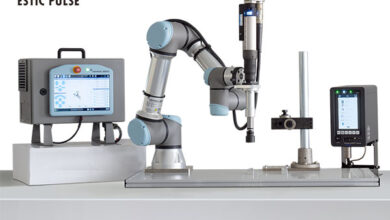Best Practices for Continuous Localization in Agile Development

For good reason, agile has taken the software development world by storm. It’s a fantastic fit for the fast-paced digital world since it promotes quick, continuous revisions to get goods to market faster.
Even the most agile teams might face problems when delivering goods in many languages to a worldwide customer base. All too frequently, localization is treated as a separate workflow after completing the development cycle. This is where new localization technology may assist you in integrating localization workflows into agile product development from the start, allowing you to shorten release cycles in each target market.
To make the best use of it, you need an effective plan covering everything from strategy and implementation to why localization technology is vital for successful continuous localization.
Continuous localization incorporates translation into agile software development to ensure continuous multilingual content delivery. This is how it works. When integrated into the agile development process, continuous localization can substantially speed up the process of adapting software for worldwide audiences. In this post, we’ll look at the best techniques for continuous localization in agile development so you can provide a consistent user experience to a global audience.
Why Traditional Translation Methods Do Not Lend Themselves to Agile Product Development
Traditional translation methods interrupt agile development in the waterfall product development model, where each phase follows in sequence. This is because translation is frequently treated as a separate process. Each level of development must be completed before teams can move on to the next stage in waterfall project management.
The significant disadvantage of this practice is that many projects miss their deadlines. If even one stage is delayed, it impacts the entire project. Furthermore, implementing any necessary changes is difficult and time-consuming, and delaying testing until development is complete means that if an issue emerges, it is difficult to resolve, leading to further postponement of the release.
Simultaneously, translation service providers claim to be as agile as developers and to use similar practices. However, localization is frequently separated from the development process—packaging up string resources into localization kits after each sprint. Finally, they send translation kits to a different translation team, forcing them to keep track of numerous overlapping agile activity threads.
This leads to an unimaginable increase in the complexity of continuous localization management.
The Emergence of Agile Methodologies in Localization
Agile emerged as a solution to the shortcomings of the waterfall process. The agile software development process aims to start small, iterate, and pivot until you have a good product. Agile is a more adaptable project management approach focusing on continuous product improvement.
Content for localization is moved around in smaller boxes in an agile structure, and the localization team can work alongside the sprint. In other words, rather than occurring at the end of a project, localization occurs concurrently with development.
The agile method allows you to detect and fix problems swiftly and easily react to changes, resulting in shorter turnaround times. However, localization processes must also adjust in the background, which might be a difficult shift.
The Best Practices of Continuous Localization
- Start Localizing from the Beginning
Starting early is a crucial principle of agile development. Similarly, localization should be incorporated from the start of the project. Localization experts should be included in teams, or localization requirements should be considered in the original product planning. You can avoid costly revisions and ensure a seamless internationalization process.
- Use Localization Automation Tools
Speed and efficiency are critical in an agile environment. The use of automated tools can considerably improve the localization process. TMS and continuous integration solutions can assist in automating the extraction, translation, and integration of text strings within your application.
- Use String Externalization
It is customary in agile development to divide code from content. String externalization is placing all user-visible strings as resource files rather than hardcoding them in the source code. This allows you to alter language-specific material without having to rewrite the source.
This method streamlines the localization process by allowing translators to work directly with resource files while developers concentrate on code improvements.
- Use Translation Memory
In continuous localization, translation memory (TM) is a vital tool. TM technologies save previously translated text, making it possible to easily reuse translations for repeating phrases or terms. This speeds up translation and assures language uniformity throughout your application.
- Adopt Agile Localization Methodologies
Localization, like development, can use agile approaches. Implement concurrent localization sprints or cycles with development sprints. This enables the continual incorporation of localized material and aids in maintaining a regular release schedule. As features grow, review and update translations regularly to ensure that localized versions are constantly up to date.
- Facilitate Inter-Team Collaboration
In an agile development environment, effective communication and collaboration are critical. Encourage developers, designers, and localization teams to communicate openly. Regular meetings to review localization needs, progress, and difficulties early in development can help detect and address any barriers.
- Create Style Guides
Localization relies heavily on consistency. Create detailed style guides that give translators precise tone, style, and terminology guidance. Include instructions for placeholders, date and time formats, and other language-specific subtleties. This ensures that the translated material matches the brand’s voice and provides a consistent user experience.
- Use Continuous Testing
The same idea applies to localization as to continuous code quality testing. Set up automated tests to ensure that localized content fits within UI elements, displays correctly, and does not interfere with application operation. Continuous testing aids in the early detection of localization issues, lowering the likelihood of important errors making it to the final release.
Conclusion Continuous localization in agile development is not a luxury but a requirement for enterprises seeking to reach a worldwide audience. You may cut time-to-market, improve the quality of localized content, and improve the overall user experience by incorporating localization into your agile workflows and adopting best practices. Your software will be well-prepared to conquer international markets with effective collaboration, automation, and attention to detail, opening up new opportunities and extending your user base globally.




